It takes more than knowledge to drive behavior change; it takes understanding people’s motivations and providing the tools or skills needed to influence actions.
Many of us have been forced to change our normal behaviors and activities during COVID-19. In order to practice prevention protocols that keep ourselves and those we love safe from the 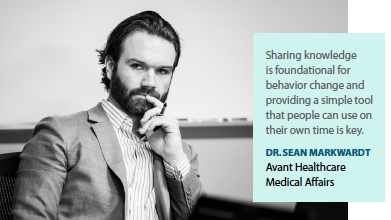 virus, we have changed the way we shop, work, educate, communicate, and socialize. And even when we know from proven sources that these safety measures flatten the curve and lower the incidence of occurrences — still we are sometimes tempted to abandon these actions because all we want to do is go back to life as we knew it.
virus, we have changed the way we shop, work, educate, communicate, and socialize. And even when we know from proven sources that these safety measures flatten the curve and lower the incidence of occurrences — still we are sometimes tempted to abandon these actions because all we want to do is go back to life as we knew it.
Why would we want to resist what we know is the right thing to do?
Because, our experts say, knowledge alone does not empower or motivate us. Behavioral sciences tells us that changing behavior requires providing information and education, but also as important is having an understanding of what drives a person and then providing the tools and skills needed to facilitate the desired change.
“Understanding behavior from a behavioral science perspective includes what people do, what they feel, what they think, and how they think," says Meredith Terry, Ph.D., director of 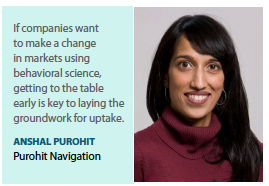 behavioral strategy at MicroMass Communications. “In healthcare marketing, leveraging behavioral science means addressing the motivation and skills needed to change a person’s health-related thoughts, feelings, and behaviors."
behavioral strategy at MicroMass Communications. “In healthcare marketing, leveraging behavioral science means addressing the motivation and skills needed to change a person’s health-related thoughts, feelings, and behaviors."
Almost all of the challenges that pharma is focused on addressing today come down to changing behavior, Dr. Terry says. Whether targeting patients or providers, marketers need to shift their focus from a purely brand-centric approach to understanding the complex factors that affect behavior, decision-making, and optimal healthcare outcomes.
From oncology to allergy medicines, behavioral scientists say patients need to feel they need the medication before they will be adherent. For instance, according to an eyeforpharma article, Eisai took a behavioral science approach for one of its oncology drugs after marketers noticed that the duration of treatment for its oral cancer drug Lenvima for differentiated thyroid cancer seemed to be shorter in clinical practice than in clinical trials. Eisai marketers knew the drug was effective, but patients were not getting the optimal benefit, because they weren’t taking it as prescribed. So the company launched a behavioral change program aimed to increase adherence to Lenvima by providing HCPs with tailored support materials to give to their patients.
Reports say the initiative was well received by HCPs and Lenvima was nominated for the Best Pharmaceutical Product at the 2016 Prix Galien USA Awards. While it did not win the Galien 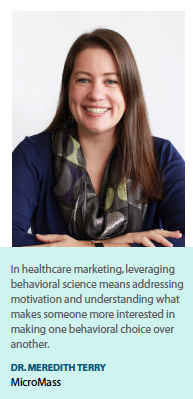 award, according to eyeforpharma, the campaign was a success for both physicians and patients as it improved adherence and compliance, leading to better patient outcomes.
award, according to eyeforpharma, the campaign was a success for both physicians and patients as it improved adherence and compliance, leading to better patient outcomes.
Digital and Behavioral Science: A Perfect Match
While the concept of behavioral marketing has been around for many years, recent technological and digital advances have allowed the pharma industry to connect with physicians and patients on a more personal level. The two are a match made in heaven, each symbiotically supporting the other. Technology provides the data that allows marketers to drill down to a micro level, which is vitally important to the success of a behavioral science program. Digital tools allow for the collection of that data at all the touchpoints along the patient journey, and AI helps analyze all the data collected.
While evidence-based data will always be essential, knowing how to extract and use the most important information is becoming increasingly important. In behavioral marketing, the key is to figure out who the target audience is, what they want, and how they want it.
According to Anshal Purohit, president, Purohit Navigation, the industry has started to ramp up its use of behavioral science due to increased awareness of its effectiveness as well as a shift to a more personalized drug market landscape, as opposed to the former era of broad blockbuster brands.
“Behavioral science is not an emerging field, but the awareness of the importance of behavioral science is rising as a key input to drive change and drive markets," she says. “There are more specialty brands and more innovation in healthcare, which means more sub-segmentation. Today, there are more modality shifts and opportunities to dramatically change therapeutic areas than there once were."
According to Peter Hirsch, global consulting partner, Ogilvy Consulting, digital has definitely influenced the use of behavioral science. “We’ve developed behavioral science tools that go beyond insights at the human species level to create cognitive personas for both patients and physicians," he says. “Being able to deliver customized messages to different cognitive personas is built on the bedrock of digital engagements crossing the spectrum from creative executions, digital adverting, email notifications, mobile apps, and even to new platforms such as chatbots and AI, which are perfect for notifications and nudges."
The use of behavioral science has evolved in the industry from a singular tactic to becoming a viewpoint integrated throughout the entire brand campaign, starting early in the product life cycle. “Several years ago, behavioral science was considered an add-on where it was most relevant, but recently the practice has broadened and is now being incorporated into the entire marketing program, into the portfolio, and across the entire pharma company," Dr. Terry says. “That integration brings a better understanding of people and how to motivate behavior change, which leads to better strategic decision-making for the brand."
“One of the really exciting things about the evolution of digital is that the application of behavioral science is evolving right alongside," says Kathy Moriarty, senior behaviorist, MicroMass Communications. “It’s exciting to see how technology advancements enable us to  continually advance how we deliver behavioral science to help support patients in more innovative, personal, and, ultimately, helpful ways to support the desired behaviors that we’re addressing.
continually advance how we deliver behavioral science to help support patients in more innovative, personal, and, ultimately, helpful ways to support the desired behaviors that we’re addressing.
The move away from a cascade waterfall model to more of a behavioral science one has been driven by the need to know the patient or physician at almost an individual level. “Behavioral change happens on the micro level," Ms. Purohit says. “So, we are finding ways to be facilitative at the point of decision, whether that decision is a diagnosis or a treatment. The advent of digital tools are mimicking that deep dive, so rather than just a CRM campaign that’s focused on an overall segmentation shift, we’re also identifying interventions at the point of action."
Technology backed by behavioral science can help physicians overcome habits and biases, leading to better patient care, says Sean Markwardt, Ph.D., managing director, Avant Healthcare Medical Affairs.
“For example, with simulations, physicians can practice surgical procedures, make circumstance-based adjustments to their emotional intelligence, or read a new type of diagnostic tool," Dr. Markwardt says. “In other words, physicians can test different approaches in a safe environment. Think of Malcolm Gladwell’s 10,000-hour rule. You no longer need 10,000 actual patient hours to master a skill. With simulations, physicians can now master life-saving skills before they even approach a patient."
Through the use of analytics-based marketing and the principles of behavioral science, it’s now possible to identify undiagnosed patients for a specific condition, healthcare providers who are currently treating these patients for other conditions, and where these care providers are on the continuum of decision-making for these patients regarding the particular disease.
“These tools provide the ability to find undiagnosed patients along their disease journey, and to understand the HCPs who are currently treating them for other conditions," says Curtis Herrmann, executive VP, account services, at MEI. “This knowledge can inform pharmaceutical companies on how to effectively engage HCPs with information tailored to help them move forward in their treatment-decision processes."
However, Ms. Moriarty cautions, while digital technology has enabled many new opportunities to reach patients and physicians, it is not the only medium to use. Marketers still need to identify the best channel for reaching the desired audience, taking into consideration channel preferences, learning styles, and the goals to be met.
Ironically, in today’s digital age, marketers might want to go old school and include print as part of their tool kit as a way to cut through the noise.
“In terms of channels, there is something novel about print these days. Digital messages can get lost in the fray, whereas a print piece might stand out in a way that it wouldn’t have 10 years ago," Ms. Moriarty says. “Another aspect to consider is the learning style of each individual and how to utilize various executions to meet their needs. Some people learn by holding, doing, practicing, or trying; others learn by reading or by watching or listening. Using this aspect of behavioral science enables us to best support positive change in the desired health behaviors."
Digital Tools Facilitate Behavior Change
Breaking habits or biases is challenging and requires a mix of several tools, from simple educational and knowledge-sharing platforms, to gamification for continuous quizzing, to more experiential tools such as virtual and mixed reality.
Digital tools, in the form of smartphone apps, can be used to connect with patients and physicians with timely interventions, or nudges, including medicine reminders and tracking measures to evaluate health progress and gather statistics. However, apps are not always optimal for long-term behavioral change. Experts say digital headbands or bracelets, often coupled with apps, may work better for long-term behavior change. Also, chatbots, AR capabilities, and AI platforms are being used today.
Mr. Hirsch says using behavioral science to personalize content delivered digitally has proven essential to engaging with patients and physicians to help change behaviors. “Chatbots have proven to be particularly successful," he says. “For Public Health England, we pioneered chatbots for smoking cessation."
Other successful examples of digital behavioral science-based tools include the Noom app for weight loss. Mr. Hirsch notes Noom’s market growth reflects its effectiveness as a behavior-based change model.
Dr. Markwardt notes sharing knowledge is foundational for behavior change and providing a simple tool that people can use on their own time is key. “Sending a series of questions to spur contemplation is a powerful tool to create behavior change," he says.
Another example is mixed or augmented reality devices that can simulate complex real-world experiences. Through well-designed storylines, experiential reality can provide alternative 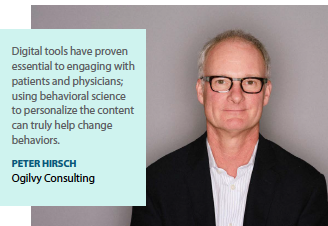 choices for healthcare providers to try various approaches to understand biases and habits and provide ways to break them. These activities can then be supplemented by a questionnaire or a knowledge-sharing platform. Ultimately, changing behaviors requires a mix of tools to make lasting change.
choices for healthcare providers to try various approaches to understand biases and habits and provide ways to break them. These activities can then be supplemented by a questionnaire or a knowledge-sharing platform. Ultimately, changing behaviors requires a mix of tools to make lasting change.
AI can also be used as a tool. AI that is focused on diagnosis can deliver a disruptive impact in three areas: awareness, activation, and adoption, Mr. Herrmann says.
AI can move HCPs forward on the continuum change path by driving awareness of the clinical journey that undiagnosed patients undergo and inform HCPs about their demographics to expedite the journey. AI platforms also can map connections among specialties to assess which HCP networks to activate, which, in turn, facilitates appropriate diagnoses. AI-based solutions also support multichannel engagement strategies that target HCPs with tailored content on appropriate diagnosis of rare and other difficult-to-diagnose diseases through field activities, peer-to-peer approaches, or online platforms. And AI can drive the adoption of clinically appropriate diagnostic and therapeutic approaches. “Engaging clinicians with pertinent educational materials is imperative to shape treatment approaches," Mr. Herrmann says.
The Way Forward
Human behavior is a barrier to meeting brand objectives. This barrier could be in the form of a patient’s adherence, a patient’s reluctance to start a new therapy, or even a healthcare provider’s clinical inertia.
Mr. Hirsch explains that one of the core principles in behavioral science is based on the difference between gain framing and loss framing — in other words, presenting information to the target audience as the source of a benefit or to help prevent a loss.
In most healthcare contexts, gain framing works better because of another behavioral science principle — information avoidance, which means people generally don’t like to hear about a threat to their health.
Behavioral science provides a roadmap to uncover what people are motivated to do, what they are willing to try to build on their strengths, and how they can benefit from learning new techniques within the context of their condition and their life.
As the industry moves forward with incorporating behavioral science, its efforts to understand what drives patients and physicians will become more effective.
Our experts believe that even traditional marketing approaches will benefit from including behavioral science strategies and expertise.
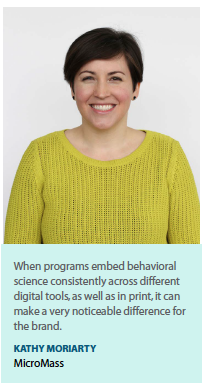 “As more pharmaceutical marketers learn about the benefits of better understanding both patients and providers, what motivates them, what drives their behavior, and how their behavior can be changed, we are seeing more attention being paid to behavioral science," Dr. Terry says.
“As more pharmaceutical marketers learn about the benefits of better understanding both patients and providers, what motivates them, what drives their behavior, and how their behavior can be changed, we are seeing more attention being paid to behavioral science," Dr. Terry says.
According to Ms. Purohit, more pharma companies are beginning to understand that behavioral science or behavioral change is going to be a key input, and getting to the table early is key to laying the groundwork for increased uptake.
“It’s important to think early on about how to facilitate behavioral change in order to capitalize on an opportunity when a product comes to market," she says. “That communication is driven by a desire to improve and enhance overall behavior, and that is exactly what we all got into this space to do at the end of the day."(PV)
~~~~~~~~~~~~~~~~~~~~~~~~~
Behavioral Science in Medical Affairs
Behavioral science can work as effectively in medical affairs as it does for marketing and sales. Medical affairs has usually lagged behind in applying behavioral science for HCP education, but our experts say there has been an increase in its use over the past few years.
 Curtis Herrmann
Curtis Herrmann
MEI
Effectively engaging HCPs with tailored clinical information can improve educational programs and enhance patient care. For rare diseases, AI and other patient-finding solutions have the capability to map patients to clinician practices where they are currently being managed for other conditions. By identifying these practices, gaps in medical education can be bridged and the subsequent barriers to patient identification and treatment can be removed.
 Peter Hirsch
Peter Hirsch
Ogilvy Consulting
Behavioral science is indeed starting to be used with HCPs, especially to help them have better difficult conversations with patients to get their patients to improve their health behaviors. We can also use behavioral science to understand barriers to physician adoption of new therapies that go deeper than their objective assessment of therapeutic benefit.
 Dr. Meredith Terry
Dr. Meredith Terry
MicroMass
Communications
We see a natural collaboration between behavioral science and medical affairs teams. Both of these teams are rooted in science. The medical affairs team is highly trained in clinical science and behavioral science can provide supporting information, giving team members a better understanding of what drives physician behavior, how to communicate effectively with different audiences, or how to shape or improve a person’s ability to receive, retain, and understand complicated information. For pharmaceutical brands to get the most out of behavioral science, it has to be integrated at all of the different patient and physician touchpoints.
 Sean Markwardt, Ph.D.
Sean Markwardt, Ph.D.
Avant Healthcare Medical Affairs
In short — medical affairs is not using behavioral science nearly as much as it could be. But here’s the good news, advances in technology are making behavioral science increasingly quantitative, analytical, tangible, and actionable. Additionally, there seems to be a growing social acceptance of mindfulness, meditation, and cognitive behavioral therapy. This combination is creating momentum, and I’ve been encouraged by the open-mindedness of more and more medical affairs professionals to question the status quo. This process does not need to be expensive or time-consuming, and you do not need to start a revolution. One more thing: scientists, clinicians, educators, executives, payers, and patients are all still human. There is tremendous value — beyond pharma —in just a little more understanding of what makes us think, feel, and do the things that we do.


















